Principles of correct lighting of pedestrian crossings
- dedicated lighting provides a positive contrast of the pedestrian’s silhouette on the road and in the waiting zone on the pavement,
- luminaires are installed in front of the pedestrian crossing separately for each direction of traffic,
- optics directs the emitted light from the luminaire in such a way as to illuminate the silhouette of pedestrians from the side of oncoming vehicles,
- luminaires are placed below the line of road lighting luminaires, usually at a height of 5-7 m and at a distance of 0.5-1.5 m before a pedestrian crossing
- the vertical illuminance should be significantly higher than the horizontal illuminance produced by the road lighting,
- to improve the visibility of the crossing, sometimes a different colour temperature of light sources is used than in the case of the main road lighting,
e.g., road – 4000K, crossing – 5700K.
- luminaires are installed in front of the pedestrian crossing separately for each direction of traffic,
- optics directs the emitted light from the luminaire in such a way as to illuminate the silhouette of pedestrians from the side of oncoming vehicles,
- luminaires are placed below the line of road lighting luminaires, usually at a height of 5-7 m and at a distance of 0.5-1.5 m before a pedestrian crossing
- the vertical illuminance should be significantly higher than the horizontal illuminance produced by the road lighting,
- to improve the visibility of the crossing, sometimes a different colour temperature of light sources is used than in the case of the main road lighting,
e.g., road – 4000K, crossing – 5700K.
Planning of pedestrian crossings
The Foundation for the Development of Civil Engineering, Gdańsk University of Technology, Warsaw University of Technology
and the Road and Bridge Research Institute have developed WR-D-41-4* guidelines for lighting pedestrian crossings to increase
pedestrian safety. These guidelines introduce among others, a new class of PC lighting.
and the Road and Bridge Research Institute have developed WR-D-41-4* guidelines for lighting pedestrian crossings to increase
pedestrian safety. These guidelines introduce among others, a new class of PC lighting.
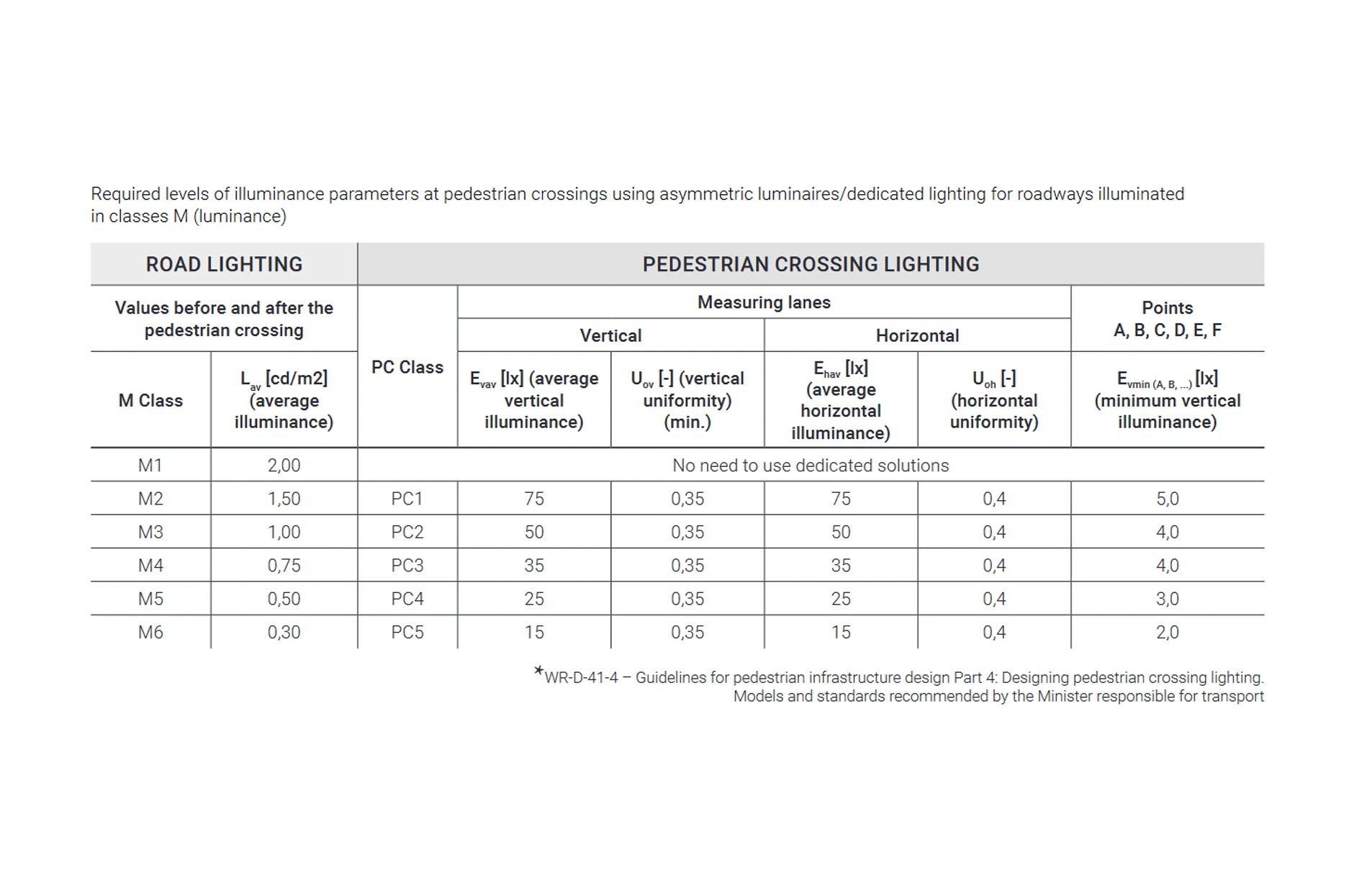
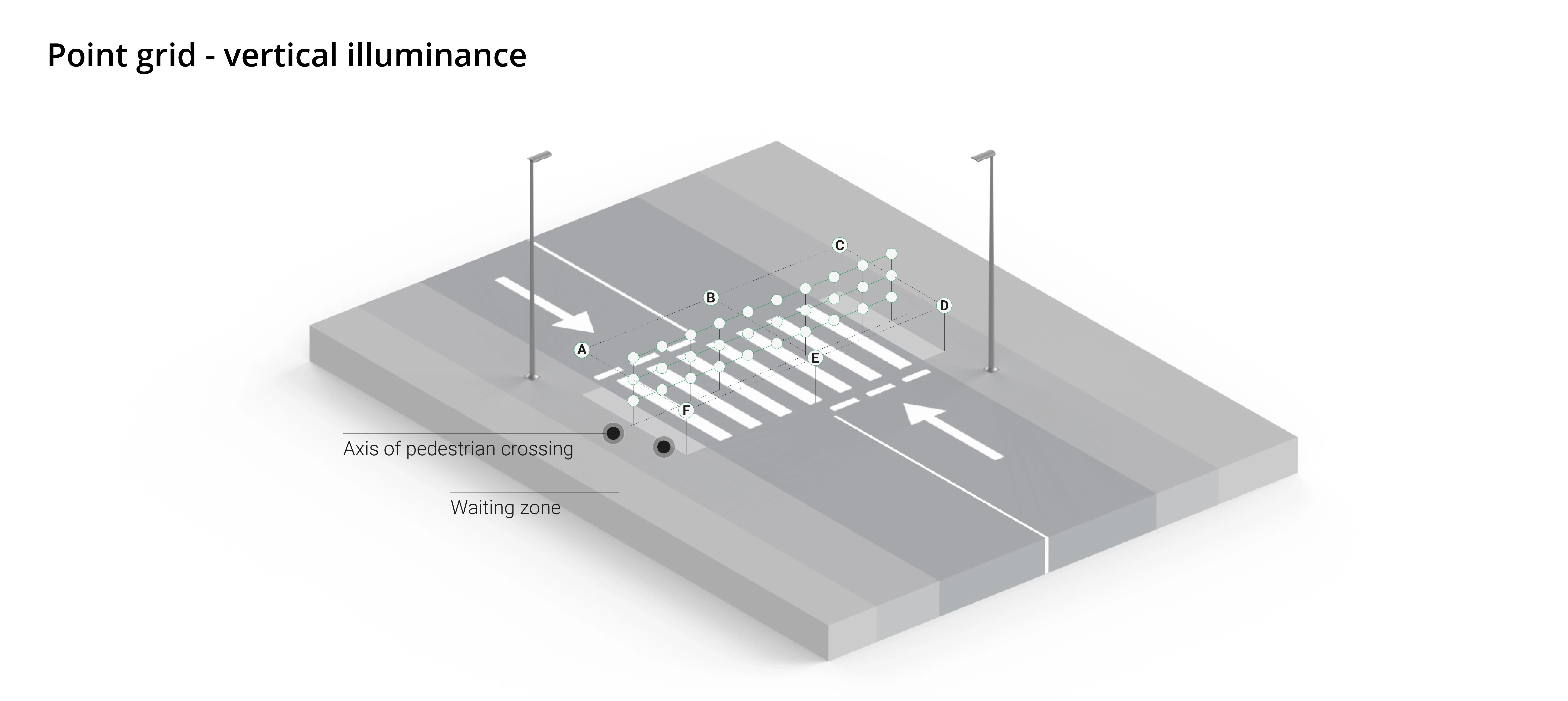
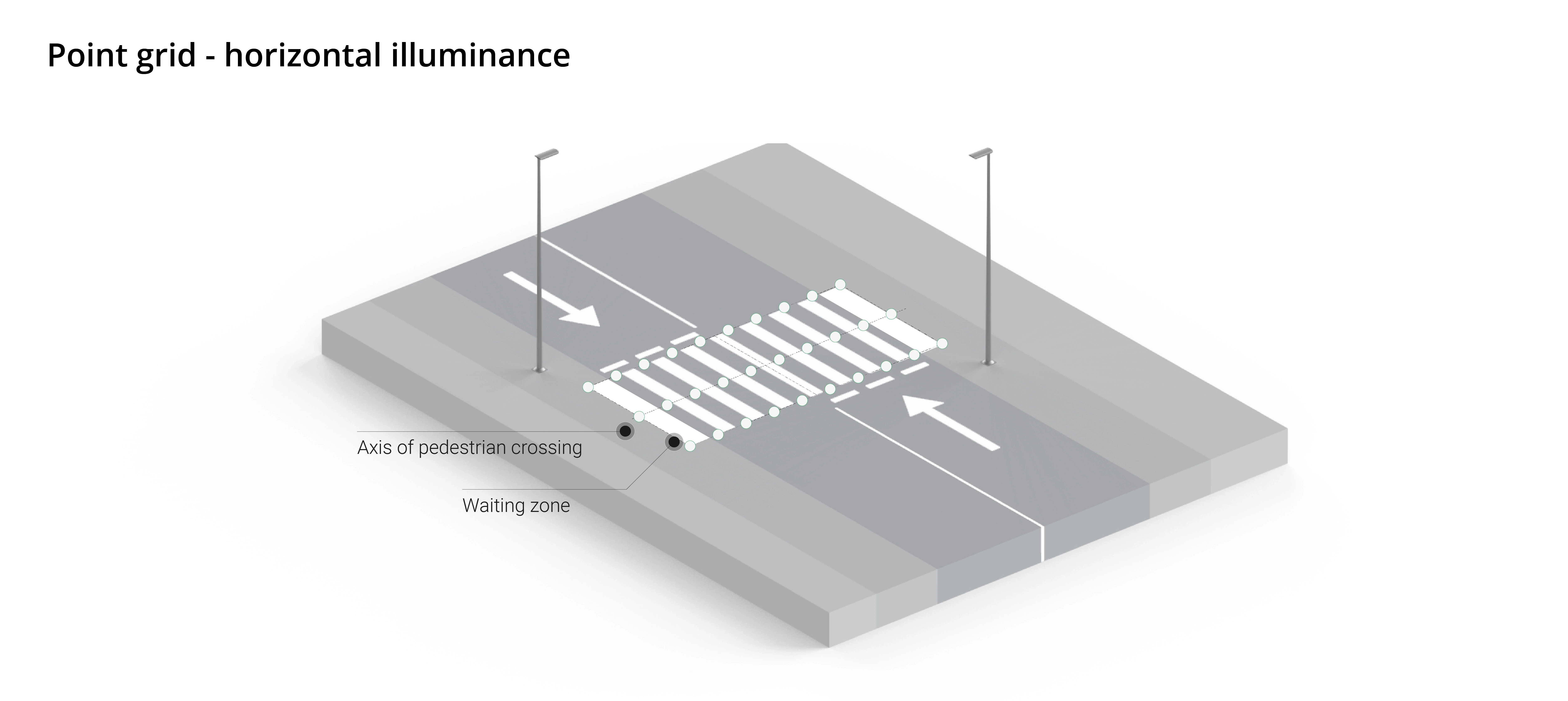
Various road variants illuminated by P2 optics
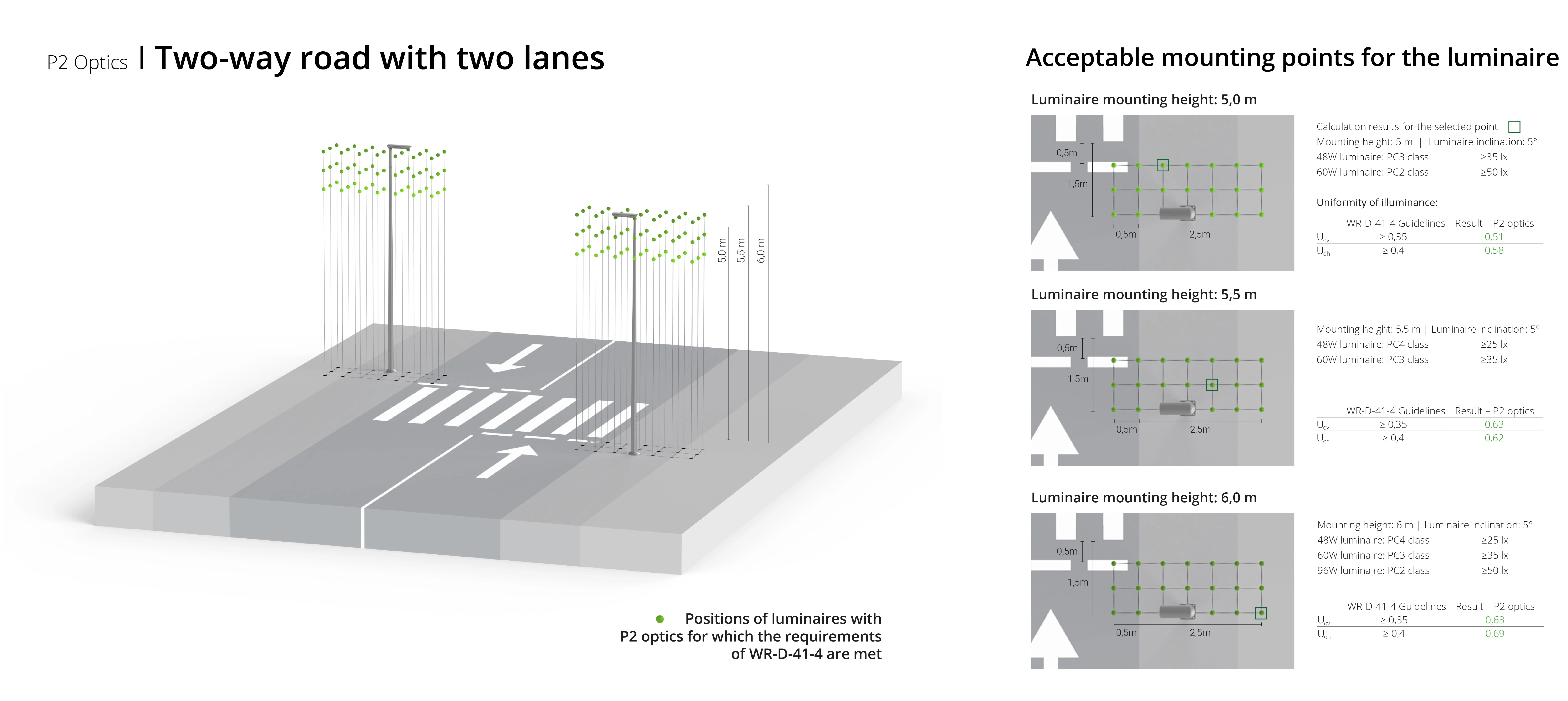
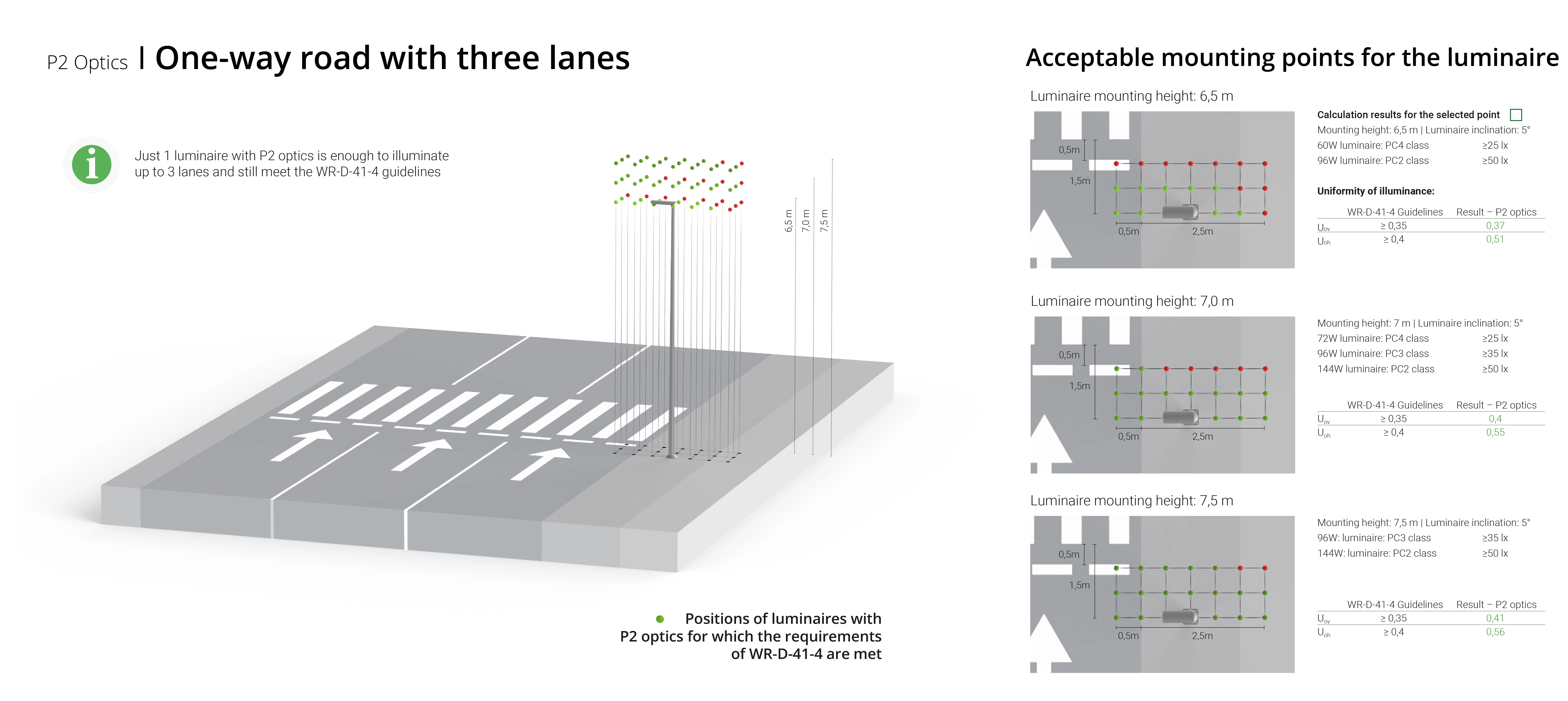
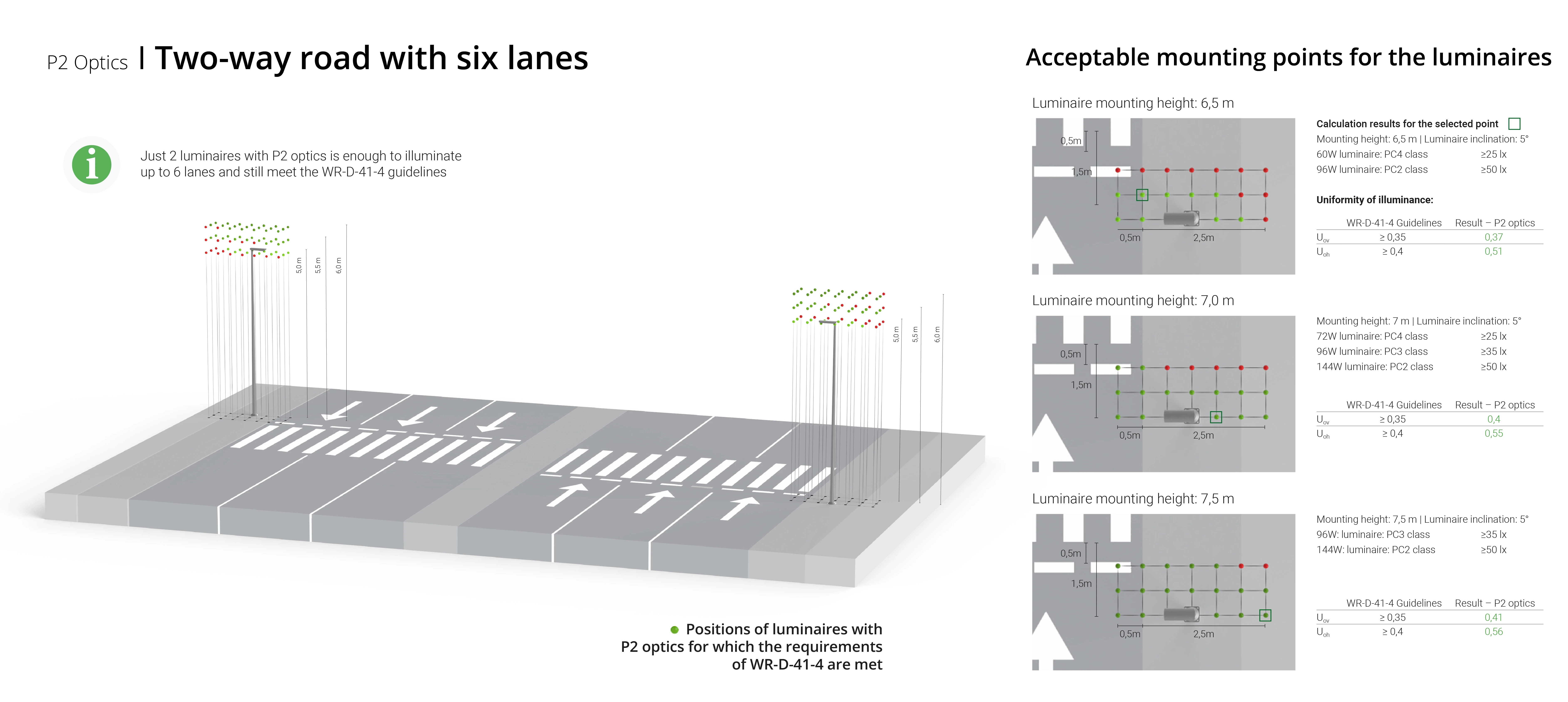

Do you have questions?
Our experts are happy to advise and answer all your questions.
You can read about what optics is, what to consider when choosing it, and the benefits it offers in a separate article in the Knowledge Zone.
You can read about what optics is, what to consider when choosing it, and the benefits it offers in a separate article in the Knowledge Zone.